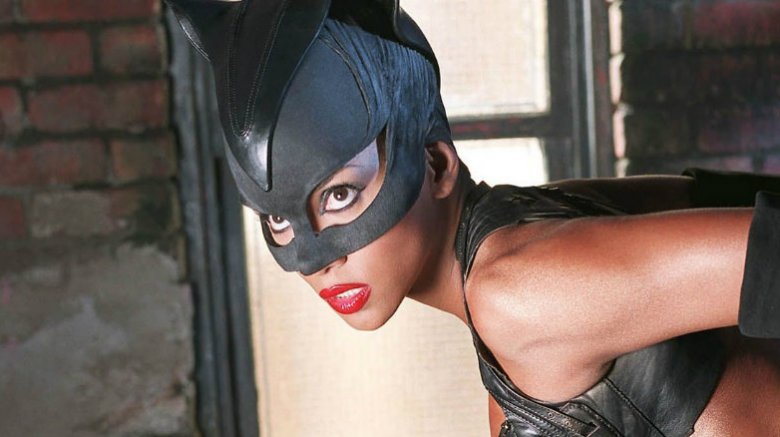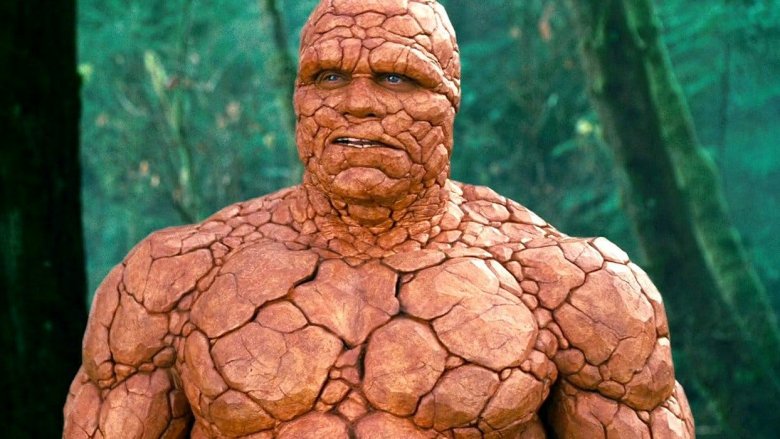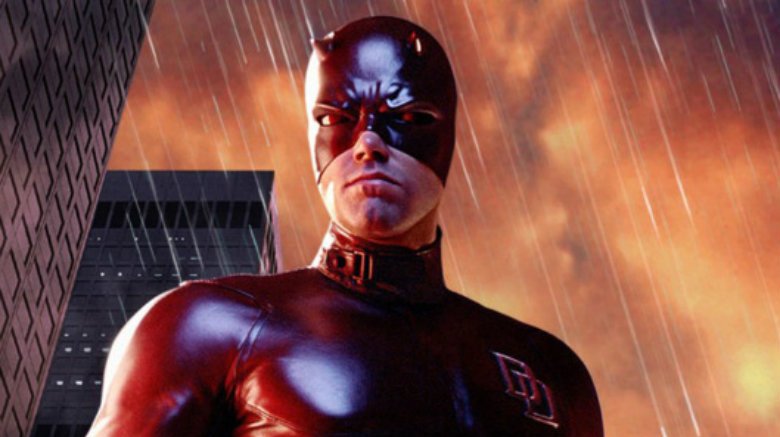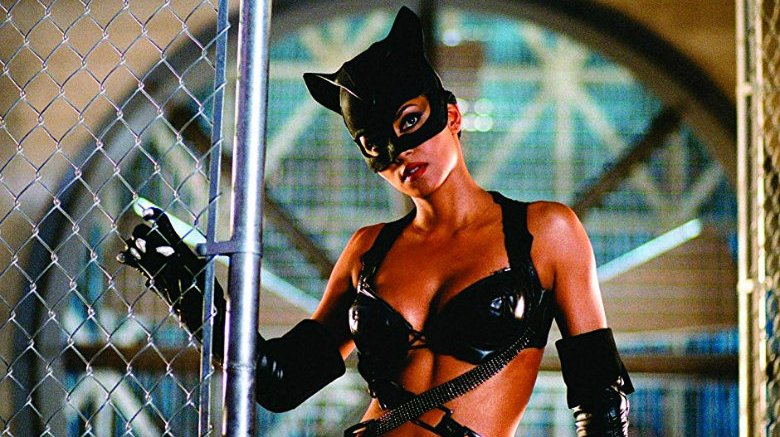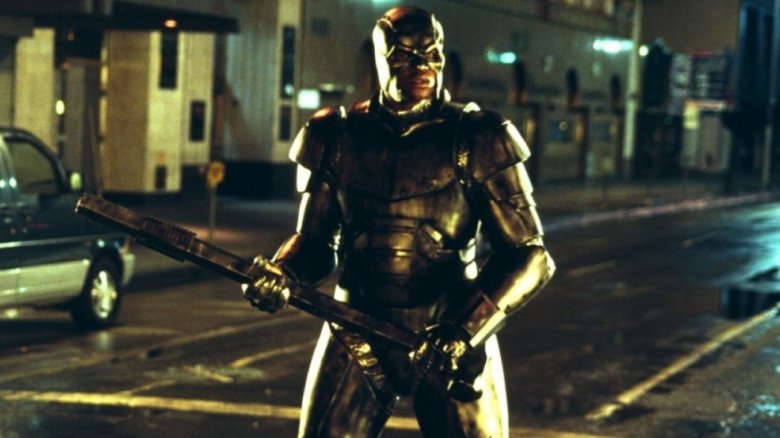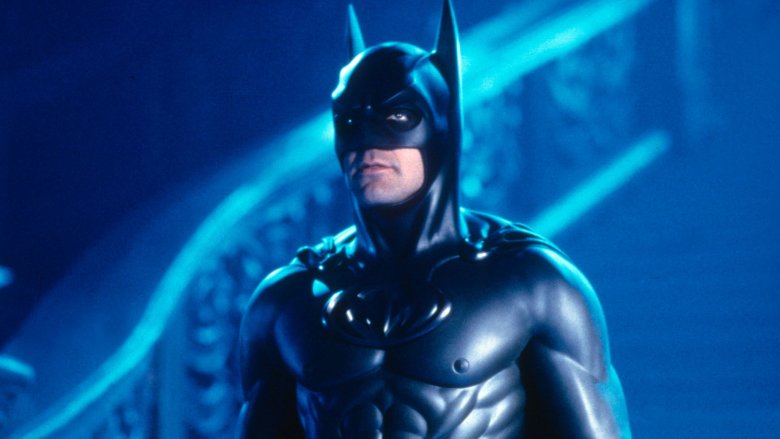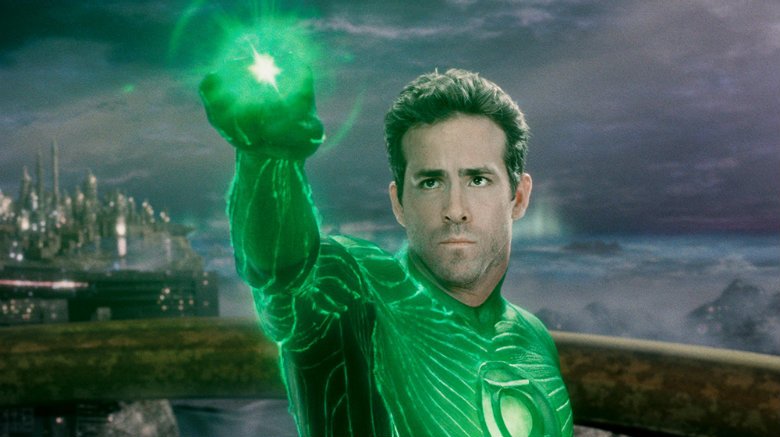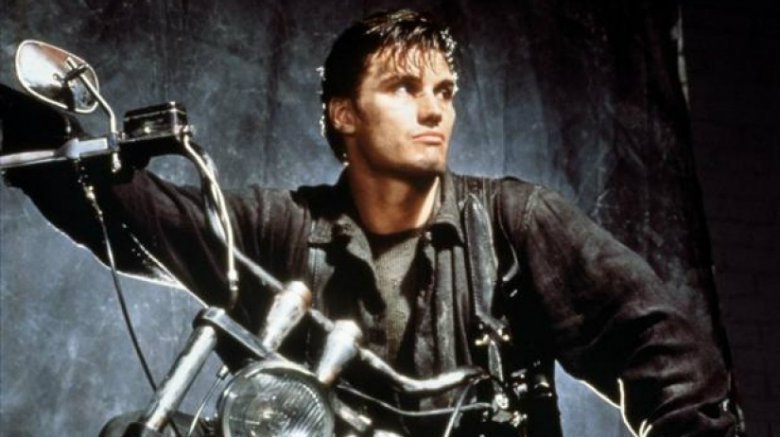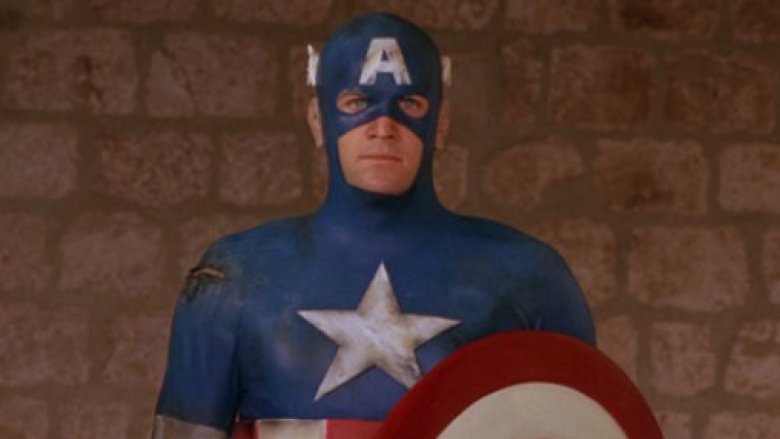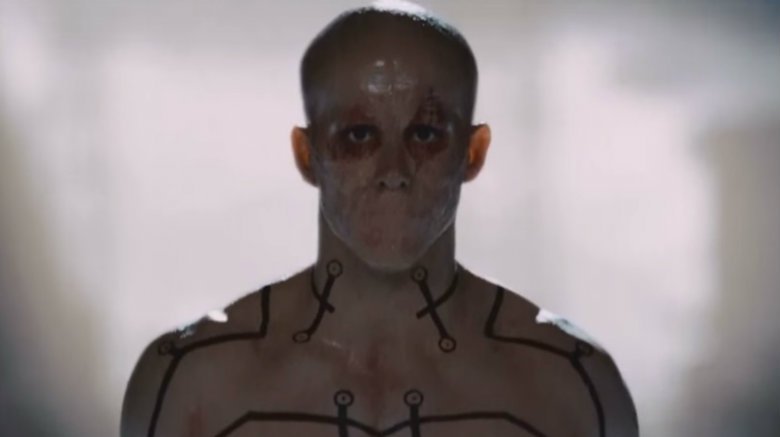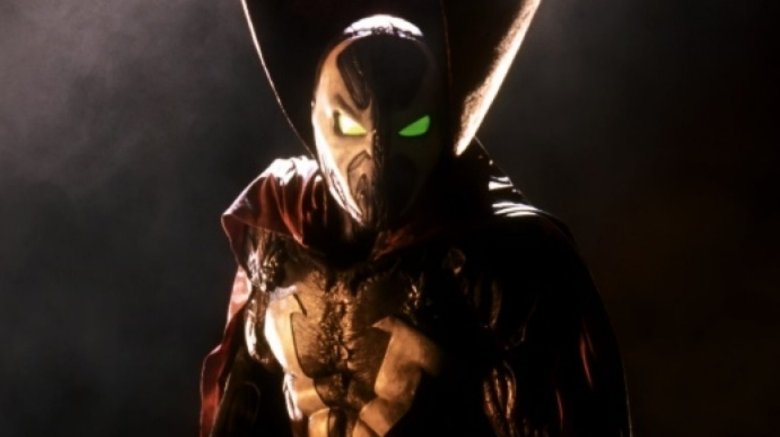The Most Disappointing Superhero Movie Costumes
From the men who can leap tall buildings in a single bound to the women who are worshipped like gods, superhero movies and the people who star in them represent escapism at their most extreme. However, despite bursting to the brim with magic, aliens and deities, these comic book adaptations must still find ways to keep grounded so that audiences can relate to the characters on screen.
Obviously, nuanced scripting and strong acting are both key to the success of superhero movies, but if the visuals don't feel realistic too, then it won't take long for audiences to feel disjointed from the events playing out on film. These days, the special effects on display are usually adept at bringing our favorite heroes to life, yet one thing that many films still struggle with is the costumes.
Whether the costume designers choose spandex, leather or even something more natural, it's not always easy to remain faithful to the source material without making our heroes look ridiculous. In real life, the majority of these comic book outfits would look strange without being modified somehow and unfortunately, the movies don't always get it right. Join us as we take a look at the most disappointing movie superhero costumes that helped ruin some of our favorite comic book characters.
The Thing (Michael Chiklis)
While the Fantastic Four are one of Marvel's most celebrated teams in the comics, their journey to the silver screen has often been less than cosmic. Josh Trank's recent attempt at rebooting the franchise was arguably the most misguided yet, struggling to inject darkness into the material while losing the fun, carefree spirit of the source material. The first widely released Fantastic Four movie didn't fare much better, scoring just 27% on Rotten Tomatoes, but at least the acting on display wasn't quite as cringe-worthy.
In fact, Michael Chiklis was actually rather impressive in the role of Ben Grimm, reminding audiences exactly why everyone fell in love with the actor during his time on The Shield. Unfortunately, much of his performance was lost post-transformation once he turned into the Thing, a rocky monstrosity that looked like it was made out of orange plastic sponge. It was commendable of the team behind Fantastic Four to try and bring Grimm to life using makeup and practical effects, particularly as CGI wouldn't have fared much better at the time. Ultimately though, this disappointing version of the Thing still failed to hit the mark and was clearly anything but fantastic.
Daredevil (Ben Affleck)
Aside from the depiction of Matt Murdock's radar senses, little else worked in the first movie adaptation of Daredevil. From Ben Affleck's serviceable performance to the radical way that director Mark Steven Johnson reworked the character of Bullseye, this portrayal of the Man Without Fear gave critics and fans of the source material no shortage of disappointment.
Effort was made to keep Daredevil's superhero costume faithful to the comics, retaining that unique shade of crimson, but the whole thing looked like a passed over relic from the old days of post-Matrix cinema. Awkward leather, unnecessary zippers, and a mask that didn't quite seem to fit Ben Affleck's face all detracted from the character in ways that Murdock didn't deserve.
Because of this, the pressure was on for Marvel's Netflix adaptation to improve Daredevil's costume in a way that felt more realistic — and for the most part they succeeded, even if we didn't see the outfit in full until the end of Season 1. Modifications that made it seem like something Murdock could have designed in real life may have been less faithful to the comics, but they were still a huge improvement over the threads handed to Affleck for his movie in 2003.
Catwoman (Halle Berry)
The only Catwoman movie released to date scored 9 percent on Rotten Tomatoes and it would take more than nine lives to count down every reason why. A huge flop at the box office, this misguided Halle Berry vehicle grossed just $82 million on a budget of $100 million and helped kill female superheroes at the movies for over a decade. The laughable dialogue and less than purrfect CGI were partly to blame, but it was clear from the moment that we first saw the new Catwoman costume that Batman was lucky to be estranged from this sorry excuse of a franchise.
Pushing aside the classic catsuit that Michelle Pfeiffer proved could look great on screen, director Pitof signed off on a cheap looking BDSM costume that wouldn't look out of place in a Halloween store. Poor Halle Berry was forced to wear a bra as a top, long-sleeve gloves with claws attached on the end and an awkward plastic helmet, complete with generic cat ears. Despite her best efforts, it was hard to take Berry seriously clad in so much leather and the idea that anyone would fight crime in this outfit was laughable at best and cringeworthy at worst. Even if you live nine times over, you'd be hard pressed to find a more uniquely disappointing superhero costume on screen.
Steel (Shaquille O'Neal)
Considered one of the greatest players in NBA history, Shaquille O'Neal has since gone on to record a number of rap albums and star in his own reality TV show, but one of his most impressive feats occurred in 1997, when he headlined his own superhero movie. Unfortunately, the film itself was less impressive, even bordering on embarrassing at times, despite the fact that Steel is associated with superhero legend Superman in the comics.
Much of the film's general lack of quality is summed up best by the makeshift costume that O'Neal was forced to wear in the titular role. Essentially a poor man's version of Iron Man, Steel's armor looked more like the suit that Tony Stark built first in a cave while being held captive by terrorists. While Steel's signature sledgehammer remained, the shield, cape and helmet were all removed to avoid any links with Superman, who Steel briefly replaced in the comics following the Son of Krypton's death. After Steel bombed hard at the box office, O'Neal avoided lead movie roles for a long time after, instead refocusing his energy on returning to sports alongside the occasional TV appearance.
Batman (George Clooney)
Batman's appearance has evolved time and time again in both the comics and on screen, changing to fit whatever tone is required for each particular incarnation of the Caped Crusader. As a result of this, fans have seen everything from a dark and ultra-realistic version of the Dark Knight in Batman Begins to the campy delights of Adam West's original Batman TV show. While the latter costume was hardly the best that the superhero genre has to offer, it made sense in the context of the era and general tone that the producers were looking for. Unfortunately, the same can't be said for George Clooney's outfit in Batman & Robin.
Clooney wasn't the only one decked out poorly, but with no other live-action incarnations to compare them to, Poison Ivy and Mr. Freeze only looked somewhat ridiculous in comparison, whereas Clooney's Batman was an affront to fans who had stuck by the Caped Crusader following Batman Forever.
Gone was the streamlined black suit worn by Michael Keaton in the first two Batman movies. In its place was a blue chrome costume that included secret Bat-skates and obvious Bat-nipples, which protruded from Clooney's chest with distracting flair. Merchandising was key to the success of the Batman franchise from the beginning, but few could have predicted that Warner Bros. would go all the way and dress Clooney like an actual toy lifted straight from the shelf.
Green Lantern (Ryan Reynolds)
It seems strange looking back now that the very genre that made Ryan Reynolds a superstar in the Deadpool franchise almost killed his career just a few years earlier. Following lackluster roles in Blade: Trinity and X-Men Origins: Wolverine, Reynolds appeared in what was arguably his worst superhero movie to date, Green Lantern. Starring as the Emerald Knight, Reynolds' first headlining superhero gig failed to earn back its production budget and squandered the potential of a fascinating DC character in the process.
Plastic-looking CGI became par for the course in Green Lantern, barely animating the numerous aliens and planets on display with any kind of soul. One way that these special effects could have worked well, though, was in the construction of Green Lantern's suit. Because his costume is another green construct created by the ring in the comics, director Martin Campbell and his team reasoned that CGI could be used to create the suit in their film too. Unfortunately, what the post-production team came up with looked even more fake than the aliens that surrounded it, detracting even further from Reynolds and his struggle to make something out of the paper-thin script.
The Punisher (Dolph Lundgren)
Marvel and Netflix recently teamed up to finally give Frank Castle the treatment he deserves onscreen, creating a Daredevil spinoff show that successfully managed to capture the elusive appeal of the Punisher in the comics. It's been a long road getting here, though. Before Jon Bernthal painted a skull on his chest in the new series, three other actors all portrayed the Punisher on film to varying degrees of success.
Whether you have a particular favorite or think all three movies failed to capture Castle effectively onscreen, Dolph Lundgren's portrayal of the character in the first Punisher movie is arguably the least comic book accurate, at least in visual terms. By removing the skull logo from his chest, this disappointing version of Castle looked like any other angsty '80s action hero and unlike other mentions on this list, the Punisher's costume is arguably the easiest to get right, even by the standards of '80s Hollywood. With no CGI or elaborate costume design needed, how on Earth could they get this so wrong?
Captain America (Matt Salinger)
Created in 1990 to coincide with the 50th anniversary of Captain America's comics debut, Albert Pyun's film adaptation was eventually released direct to video in 1992, and remains one of the most critically disappointing superhero movies of all time. Starring Matt Salinger, the son of author J. D. Salinger, Captain America took painful liberties with the source material and would have been better off staying on ice permanently.
Lacking both a reasonable budget or script, Captain America is best viewed now as a curio for diehard Marvel fans eager to see how one of their favorite heroes has previously been treated on film. Those same purists might be turned off, though, by the cheap-looking costume that doesn't look fit to be worn by a superhero, particularly in contrast with the new films starring Chris Evans. From top to bottom, the outfit appears to have been made in a costume store, but it's the rubber ears that will haunt viewers long after the credits finally roll.
Deadpool (Ryan Reynolds)
The costume seen in the solo Deadpool movies is easily one of the most comic-book accurate ever depicted on film, bringing the Merc with a Mouth to life straight from the panels of a comic book. However, it wasn't always this way. Cut back to Deadpool's disappointing cinematic debut in X-Men Origins: Wolverine, and fans were outraged that director Gavin Hood and his team took such liberties with the character. It's not unusual to modify a hero's costume to make it work for cinema, but this version of Deadpool was almost impossible to recognize from the source material.
Not only did Fox drastically alter Deadpool's origin and abilities for this poorly received prequel, but the Merc's trademark red costume was also nowhere to be seen. In its place stood a shirtless, silent figure who looked like a faceless reject from one of the Mortal Kombat games. Luckily, star Ryan Reynolds still saw the potential in this character and fought for his return to cinemas everywhere. It took ten long years, but it turns out that it was well worth the wait. Deadpool became one of the most successful R-rated movies of all time, breaking both box office records and the fourth wall with foul-mouthed glee.
Spawn (Michael Jai White)
Spawn will always hold a special place in the superhero hall of fame for being the first comic book adaptation to star an African-American character, preceding Steel by just a few weeks in 1997. However, that's where the accolades end. Encapsulating everything that was wrong with comics in the '90s, this interpretation of Todd McFarlane's iconic anti-hero was barely coherent and ended up receiving a hellish score of just 18 percent on Rotten Tomatoes.
In the original comics, Spawn's costume is integral to his identity, and the cloak in particular plays a vital role in the use of his powers. Here, though, Mark A.Z. Dippé and his team were forced to recreate the demonic cloak using subpar CGI that even failed to pass muster when the film was first released in the '90s. On top of that, the awkward musculature of the suit made it look like Spawn had just crawled out of a cheap video game rather than the comics pages. As one of the most popular anti-heroes of the '90s, Spawn deserved better than this, even if he is the reluctant leader of Hell's army.
